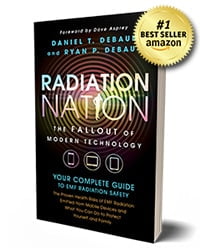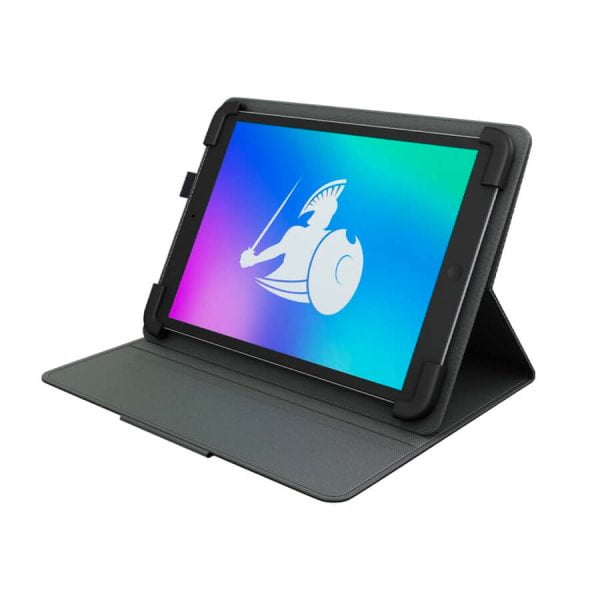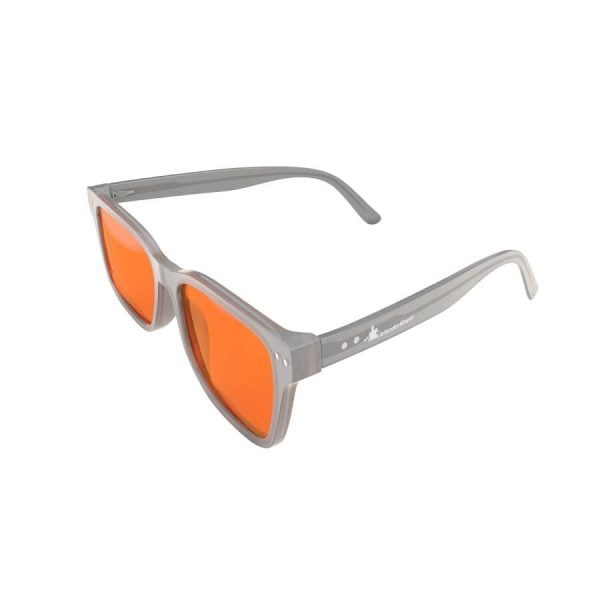Your cart is currently empty!
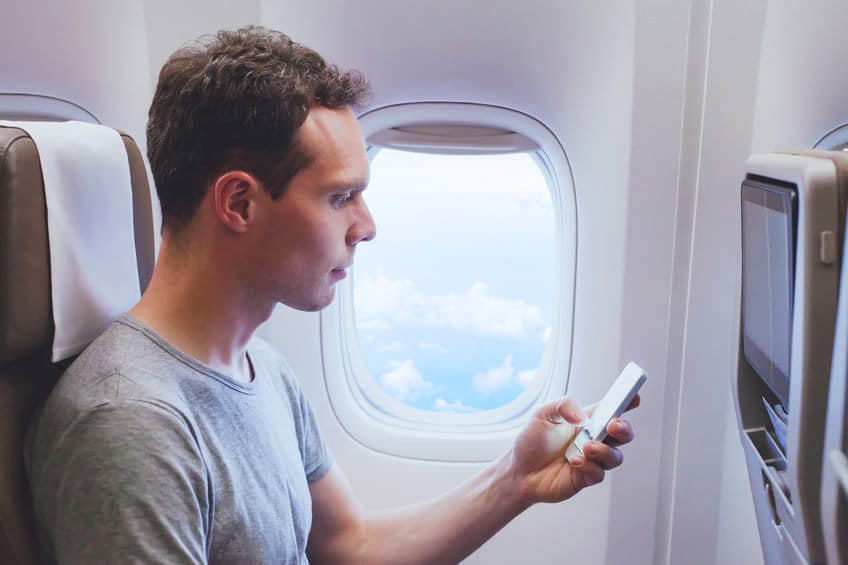
Ways to Reduce EMF Exposure While Flying in an Airplane
Last Updated on October 4, 2023

Nearly all day, every day, we are exposed to Electromagnetic Field (EMF) radiation. From the televisions and computers in our homes, to the WiFi hotspots at the Starbucks you visit every morning, and especially to the smartphones that are now practically glued to our bodies, potentially harmful EMF emissions are everywhere.
EMF radiation is a low form of energy that emits from all electronic devices, such as cell phones, tablets, and laptops. WiFi, Bluetooth, and cell tower connections are all types of radio frequency EMF waves on the Electromagnetic Spectrum, and the most up-to-date research shows that these emissions have proven health risks.
Not only can EMF radiation affect us when we are walking the Earth, but when flying high in the sky, we are at increased risk for exposure. Though the sky may look vast and completely empty except for the stray cloud, there are over 44,000 flights a day, carrying 2.7 million people.
Not only is EMF radiation emitted from all the electronics on board, but flying also exposes us to higher levels of cosmic radiation than while on the ground. The Center for Disease Control and Prevention even classifies airline crew members as radiation workers.
Let’s take a look at how flying in those big metal cylinders can actually increase our EMF radiation exposure.
Airport Scanners
Prior to takeoff, we are exposed to radiation from airport security scanners. The Transportation Security Administration (TSA) uses body scanners at airports across the U.S. These scanners use millimeter-wave technology, producing non-ionizing radiation. The difference between ionizing radiation (x-rays, gamma rays) and non-ionizing radiation (radio waves, microwaves, visible light) is that ionizing radiation is very high energy, so high that it can ionize atoms (ie. create explosions).
In the past, non-ionizing radiation was thought to have no harm on the body, but now adverse biological effects are being discovered even with this low-energy type of radiation.
When the TSA first introduced this scanner technology following an airport incident on Christmas Day 2009, there were two different types of technology being used: backscatter X-rays and millimeter-wave.
A study done at the University of California, San Francisco and the University of California, Berkeley found that the cancer risk from the backscatter scanners was “truly trivial.” According to their study, going through the backscatter scanners increases the risk for cancer by 0.000015%. However, the European Union banned these backscatter x-rays in 2011 in all European airports “in order not to risk jeopardizing citizens’ health and safety. Backscatter technology has since been replaced in airports with millimeter-wave scanners, which use a lower frequency radio wave.
Yes, the millimeter-wave scanners do use radiation, and millimeter wave technology might have harmful effects used as a communications frequency in 5G mobile networks. However, in terms of airport scanners, the extremely short period of time that you are subjected to the small dosage of millimeter waves does not make it inherently dangerous, according to recent research.
The American Association of Physicists in Medicine conducted a study at the LAX airport and found that the small amount of radiation used is equivalent to the amount received every 1.8 minutes while simply standing on the ground. You would have to receive more than 22,500 scans a year to reach the current standard maximum safe yearly dose of radiation. Millimeter-wave scanners at airports should not be seen as a big risk to your health, and their safety benefits for flights outweigh any health concerns they might create.
If you are going to worry about anything in the airport, it is the free WiFi and the connected mobile devices that surround you, all emitting low levels of EMF radiation. If you are worried about WiFi radiation in an airport, We advise finding an isolated section of the airport to sit in, close to a window.
While you might be exposed to some EMF radiation at the airport, the more harmful exposure happens after takeoff.
Cosmic Radiation
Commercial aircraft fly between 31,000 and 38,000 feet in the sky, which is approximately 5.9 to 7.2 miles. The higher the plane goes, the thinner the atmosphere is, which results in less air resistance for a faster flight.
As the plane gets higher in the atmosphere, you are exposed to more cosmic radiation. Cosmic radiation is produced by stars, including our own sun, and enters the atmosphere as invisible waves.
While on Earth, the atmosphere and the Earth’s magnetic field acts as a shield to protect against the harmful radiation from space. However, as you fly higher and higher, that shield thins out, leaving you more vulnerable to cosmic radiation. Thinner air means there are less particles to deflect the radiation waves. If you were to fly coast to coast in the U.S., you would be exposed to 0.035 mSv (3.5 mrem) of cosmic radiation.
To put that in perspective, meet Tom Stuker, the world’s most frequent flyer. In 2019, he logged his 21 millionth mile of flight. Based on the average flight speed (550 mph), that means he has flown for 38,182 hours (4.36 years). His cumulative exposure is a little over 100 mSv, increasing his risk of cancer 0.5%. Since Stuker is the most extreme case (besides astronauts), if you only fly once in a while, you shouldn’t be too concerned with the harmful effects of cosmic radiation because you don’t accumulate enough flight time.
More concerning, however, is your exposure to EMFs while flying.
EMFs on Board the Airplane
Airplanes are truly a modern marvel. Within a plane, there are countless sources of EMFs: the cockpit and communications equipment, jet engines, electrical wiring and sensors, static electricity in the fuselage, WiFi, and other passengers’ devices.
What makes exposure worse while in an airplane, however, is not the number of EMF sources, but the exacerbated emissions created due to something called the Faraday Cage Effect.
Planes have a metal mesh built into their walls from hull to tail to deflect lightning strikes. This turns an airplane into a sort-of Faraday cage, which is a metal cage surrounding an object to exclude electrostatic and electromagnetic influences. It is not a perfect Faraday cage because of the communication antennas and the windows, which create small holes in the cage.
When a plane is struck by lightning, the charge hits the metal and conducts along the exterior of the plane, discharging itself and striking the ground without harming passengers or equipment, which has very heavy shielding surrounding it.
However, just as Faraday cages keep electromagnetic activity outside the plane, it also keeps EMFs inside.
Being inside this cage only intensifies the effects of EMF radiation, as the emissions cannot fully exit. While the windows on planes do allow for some EMF radiation to leak out (which is why you can have a weak cell phone signal while in a plane still on the ground), the overall structure makes the EMF environment inside airplanes a potentially concerning one.
WiFi
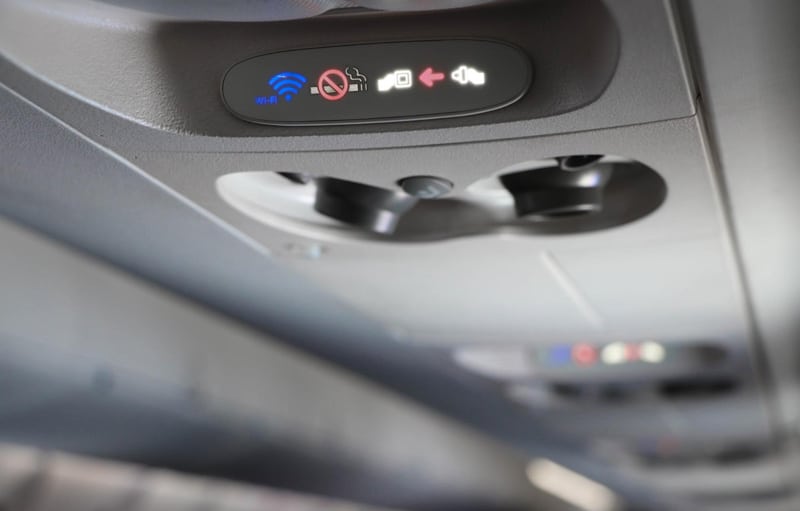
Due to the Faraday Cage Effect, WiFi is one source of EMF radiation that can impact plane passengers.
Many airplanes are equipped with WiFi hotspots to allow you to stay connected, even during long Transatlantic flights. However, we know exposure to WiFi can be harmful, regardless of where you are connecting.
There are two ways inflight WiFi works: ground-based mobile broadband towers or satellite technology.
Towers on the ground send signals up to the aircraft’s antennas, which are located on the bottom of the fuselage. As the plane travels, it connects to the nearest towers so that the signal is maintained. Issues with this type of WiFi occur when travelling over remote areas or a large body of water, as there are no towers to connect to.
The second way WiFi works onboard is by connecting to satellites that are in geostationary orbit (22,236 miles from the ground). The plane and satellites communicate with signals sent via receivers and transmitters. The antennas on the top of the aircraft distribute the signal to passengers using a router.
If they haven’t done so already, many major airlines are equipping their planes to provide WiFi for their passengers. A 2018 survey conducted by RouteHappy, the industry leader for evaluating in-flight amenities, found that 82 airlines now offer onboard WiFi and nearly half of all seat miles worldwide offer the chance to connect while flying.
Airlines in the U.S. are the leaders in providing inflight WiFi. Eight of the top ten global routes for WiFi streaming capabilities are in the U.S.—the other two are in Japan.
Because more passengers want faster Internet access requiring greater broadband—Internet access that can stream movies, TV shows, and Netflix, transfer large files, and play online games—the amount of EMF radiation being emitted increases. This WiFi radiation is then being contained and therefore magnified within the airplane due to the Faraday Cage Effect.
Other Passengers
Depending on the size of your plane, there could be hundreds of other people in the same flying metal tube as you. In this day and age, seemingly everyone has at least one electronic device (i.e. a smartphone) and many will fly with more to keep them entertained, whether its a laptop, kindle, tablet, phone, or portable gaming device.
All of these devices emit EMF radiation. The longer your flight, the longer you are exposed to the higher levels of EMF radiation.
Usually, if you are one foot away from a source of EMF, emissions drop by 80%. If you are four feet away, emissions drop by 98%. While four feet away is usually a safe distance, in the confines of an airplane, it might not be possible to create this much distance, and the Faraday Cage effect makes these numbers not as reliable.
EMF Protection While Flying
Like we always say, it’s impossible to avoid EMF radiation exposure, but moderating it when possible can benefit your health, and create a healthier environment for those around you. While most people do not spend the majority of their daily lives in an airplane, if you fly often or for long distances, airplanes can create a substantial amount of concentrated EMF radiation exposure. Try some of the following tips to limit your exposure and to make flying a little more enjoyable.
Don’t be in a rush to board
Unless you need the coveted overhead bin space for your carry-on bag, wait until the end of the boarding process to get on the plane. Doing so decreases the amount of time you are in a hyperactive EMF environment.
Pick your seat wisely
While where you sit on an airplane won’t make a huge difference in terms of your overall EMF exposure, different places of the plane could have small differences in EMF levels. If you are using an electronic device, sitting by the window will help the EMF radiation leak out so you won’t be as susceptible to the Faraday Cage Effect. However, windows are also the entry point for cosmic radiation, so sitting in an aisle seat is better if you are sticking to a tech-less flight. Sitting at the back of the plane puts you farthest away from the cockpit, which is full of electronic instruments. Also, try to find out beforehand where the jet engines are located (either on the wings or tail) and select a seat away from those.
Use an EMF shielding blanket
Use a shielding blanket to protect from the multiple sources of EMF radiation. By shielding your body with an EMF radiation protection blanket, you can keep warm and comfy (because who has ever been on an airplane that isn’t freezing cold?) while also helping to guard your body.
Wear blue light blocking glasses
These glasses block the blue light emitted from devices and the artificial light in planes. On long flights, using these glasses will help maintain your sleep cycle.
Turn your devices to Airplane Mode
Even when you are outside of service range, your phone’s cellular antenna is on and constantly sending out a signal to connect, especially at fast-moving speeds. Putting your phone in Airplane Mode will decrease the amount of EMF radiation emitted, and it won’t hinder any connective capabilities your phone has while flying since there’s no cell service in the sky. You can turn WiFi back on if you wish to connect to the onboard WiFi, while keeping your phone in Airplane Mode.
Don’t use Bluetooth headphones or AirPods
Instead of Bluetooth headphones that create another wireless signal to bounce around the aircraft, you can use air tube earbuds, which reduce EMF radiation emitted into the head and ears.
Disconnect from WiFi, even if it’s free!
Unless you need to send that final work email, use flight time as a way to disconnect. Life moves so quickly while on Earth, so use your time in the sky as a digital detox. It’s a practice that can help both your physical and mental health.
Stay hydrated
Probably the number one tip for flying is to drink lots of water! High altitudes have less moisture in the air, so you can become very dehydrated, putting your cells into a state of stress that can increase your risk of illness and adverse health effects from EMF radiation. A hydrated body also helps to move toxins through the body quicker and increases the natural electrical flow within. Avoid alcohol, and sugary and caffeinated drinks because these have a dehydrating effect on the body.
Having the ability to get to places around the world in mere hours is truly amazing. But, as is also evident with other forms of transportation and technology in general, with such advancement comes potential negative consequences.
Although we can’t visibly see it, EMF radiation is something we should be aware of and realize that there are things we can do to minimize our exposure. Next time you fly, take the necessary steps to ensure you have a safe and healthy flight!
Related Posts
None found




























